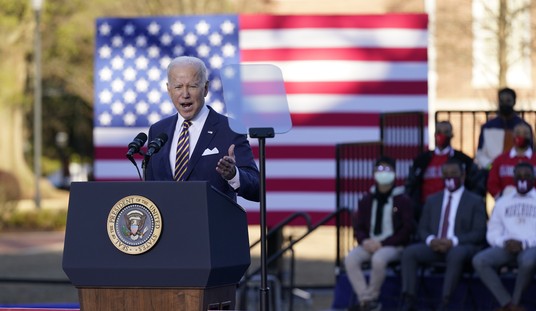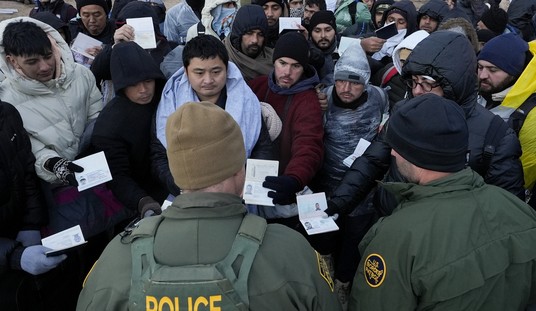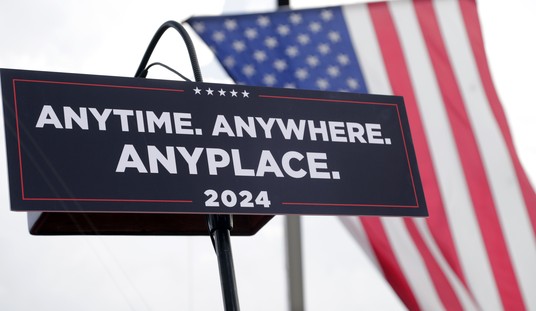Four months ago, Bari Weiss published a first hand account of wokeism taking over a private high school in New York. Math teacher Paul Rossi wrote:
My school, like so many others, induces students via shame and sophistry to identify primarily with their race before their individual identities are fully formed. Students are pressured to conform their opinions to those broadly associated with their race and gender and to minimize or dismiss individual experiences that don’t match those assumptions. The morally compromised status of “oppressor” is assigned to one group of students based on their immutable characteristics. In the meantime, dependency, resentment and moral superiority are cultivated in students considered “oppressed.”
Rossi wrote at the time that by publishing the criticism under his own name he was risking his future at the school. And soon after it was published that proved true. He was threatened and after reporting the threat, George Davison, the head of the school, ordered him to remain off campus for his own safety. A few days later Davison sent an email around saying that Rossi could no longer be an effective teacher. Rossi responded to being pushed toward the exit by revealing that Davison himself had admitted during a phone conversation that the school’s woke policies were “demonizing white people for being born.”
Davison denied ever having said any such thing, telling Rossi through the NY Post, “You misquoted me and attributed to me things that I had never said nor would ever say in the press.” But that denial was a lie. We know because Rossi had recorded the conversation and, after Davison’s denial he posted the audio:
Grace Church says Paul Rossi misquoted him. It doesn't sound like it. Listen to these clips:https://t.co/laExNH21rU pic.twitter.com/2wEF6hAkF4
— Foundation Against Intolerance & Racism (FAIR) (@fairforall_org) April 20, 2021
All of this was obviously pretty explosive and was happening in New York but the NY Times coverage left a lot to be desired. They published a dismissive piece about the issue which faulted Rossi for releasing the audio of the conversation but never included the quote of what George Davison had said or mentioned that he had essentially called Rossi a liar prior to the release of the audio. The article was even more dismissive of the concerns of parents and offered this spectacularly dishonest argument:
The new programming seemed designed to divide and provoke guilt, they maintained, forcing white children to feel bad about being white. While guilt might seem like a fraught path to reform, it was also the case that these parents weren’t the best representatives of a viewpoint challenging the emerging orthodoxies. Their letter was seven pages long, and the sentence “To be clear, we abhor racism” did not present itself until paragraph 13.
As I pointed out at the time, this smear was intended to suggest the complaining parents weren’t really committed to diversity, equity and inclusion in the first place. But the very first paragraph of the letter praised the, “unbelievable diversity of the student body” and called it one of the “great lights” of the school. The author of the Times‘ piece, Ginia Bellafante, just didn’t mention it.
In any case, four months later the Times has belatedly published a much better piece about about the controversy, one which doesn’t shy away from focusing on what it is that Rossi and parents are objecting to in the first place:
Teachers and students were periodically separated into groups by race, gender and ethnicity. In February 2021, Paul Rossi, a math teacher, and what the school called his “white-identifying” group, met with a white consultant, who displayed a slide that named supposed characteristics of white supremacy. These included individualism, worship of the written word and objectivity.
Mr. Rossi said he felt a twist in his stomach. “Objectivity?” he told the consultant, according to a transcript. “Human attributes are being reduced to racial traits.”
As you look at this list, the consultant asked, are you having “white feelings”?
“What,” Mr. Rossi asked, “makes a feeling ‘white’?”
Some of the high school students then echoed his objections. “I’m so exhausted with being reduced to my race,” a girl said. “The first step of antiracism is to racialize every single dimension of my identity.” Another girl added: “Fighting indoctrination with indoctrination can be dangerous.”
The article quotes an antiracist trainer who suggests statistics classes could be used to teach about racial inequality and biology classes should be used to teach about eugenics. But the piece also notes there may be some problems inherent in an insistent focus on race in every classroom.
Critics, a mixed lot of parents and teachers, argue that aspects of the new curriculums edge toward recreating the racially segregated spaces of an earlier age. They say the insistent emphasis on skin color and race is reductive and some teenagers learn to adopt the language of antiracism and wield it against peers.
The nerves of some parents were not soothed when more than 100 teachers and staff members applauded Dalton’s antiracism curriculum and proposed two dozen steps to extend it, including calling on the school to abolish any advanced course in which Black students performed worse than students who are not Black.
The idea of abolishing classes where Black students don’t perform as well is straight from Ibram Kendi’s definition of racism, i.e. if the results aren’t equal the process is racist. None of this is happening in a vacuum. But in general, the author of this piece actually presents what it is that the promoters of anti-racism are saying rather than leaving it to the reader’s imagination. For instance, here’s the description of an annual diversity conference at Dalton:
Mr. Best introduced the keynote speaker, Rodney Glasgow, a Black diversity consultant who leads a private Quaker school in Maryland. Mr. Glasgow, a popular speaker on the private school circuit, promptly laid waste to that world, describing it as laden with “insidious” whiteness and “built to replicate the plantation mentality.”
Mr. Glasgow ended with a flourish, comparing those Dalton parents who pushed out Mr. Best to what he described as the white supremacists who invaded the U.S. Capitol on Jan. 6. Dalton featured his speech prominently on its website until questions arose. It has since been removed.
The overall impression is that the problem here isn’t just retrograde parents, it’s some of the far-left extremism being pumped into these schools by anti-racist diversity trainers. In short, this isn’t a “conservatives seize” story about the reaction which attempts to downplay what parents and students are reacting to. This story actually holds anti-racism up to some scrutiny.
As I often do, I checked the comments to see how NY Times subscribers were reacting. This comment really stood out.
After teaching for forty years in New York city schools, I cannot begin to express after reading this article how profoundly relieved I am to be retired from the profession.
My son was a scholarship student at one of these schools and while the hothouse atmosphere of wealth and privilege was difficult to deal with for both him and his parents, we never had to confront being told that “objectivity” and “worship of the written word” were endemic components of institutional or individual racism. The term Orwellian doesn’t even begin to cover it.
I realize that places like Grace, Friends Seminary, Dalton and the rest are places very much apart from the struggling and chronically under-funded and politically neglected NYC public schools, including the CUNY campuses where I taught.
But the Ministry of Truth Newspeak being formulated and imposed on these rarified heights has already begun to filter down and permeate what passes for academic discourse in places that are in desperate need of adequate funding and infrastructural support that they are unlikely ever to get.
Instead, they will get the doubleplusungood locutions of “consultants”, mini-ideologues and spineless administrators along with the general immiseration that that combination inevitably brings.
I do feel sorry for Mr. Rossi. He sounds like an honest, dedicated, effective and empathetic teacher. So, of course he’s out.
Indeed, the story ends by noting that Rossi was offered a new contract to remain as a teacher so long as he would undergo “restorative practices” because of the harm he had allegedly done to students. The school wouldn’t even say what that would mean. It could have been anything. Rather than submit to a private course of humiliation he didn’t deserve in the first place, Rossi left.
The Times doesn’t say this but I will: If the initial reaction from the NY Times had been less dismissive and more appropriately concerned about what Rossi was saying, it might not have come to him losing his job. Unfortunately, it took the paper of record four months to publish the piece they should have published in the first place.







Join the conversation as a VIP Member